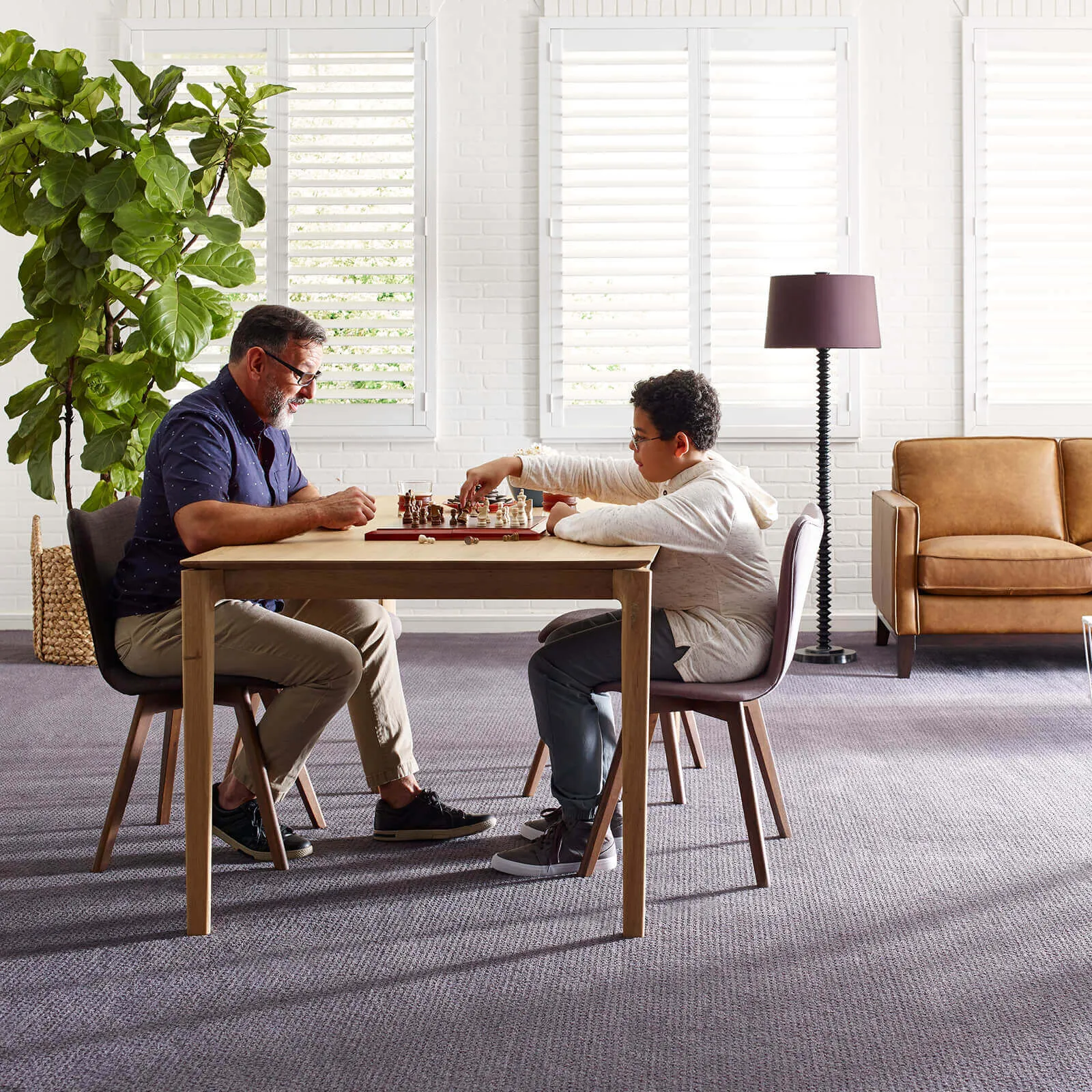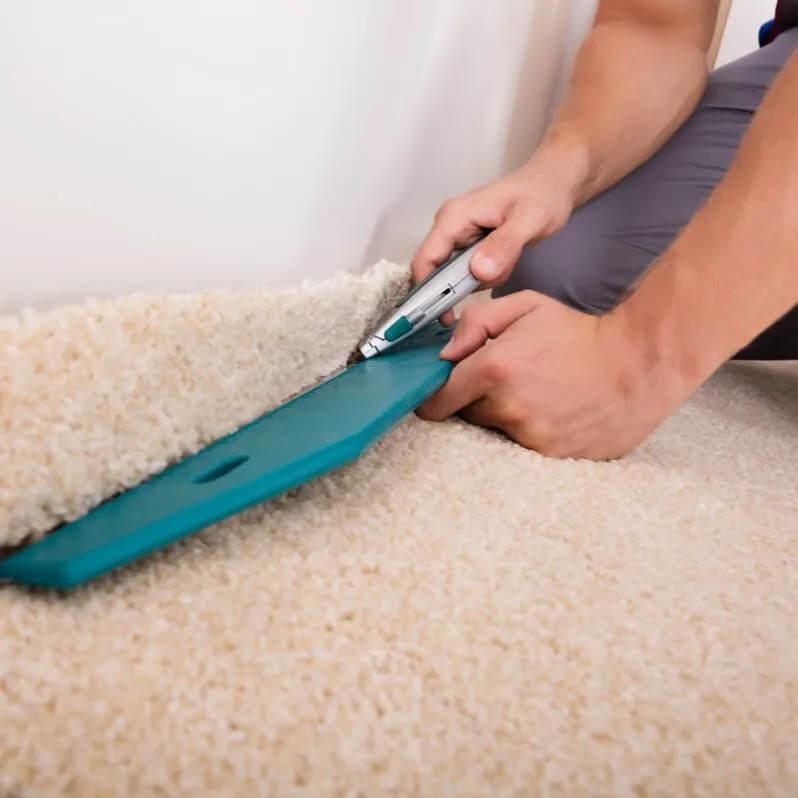Nothing warms up your home like a cozy new carpet.
Hiring a qualified carpet installer will help you get the clean lines and seams you want and make your carpet last as long as you would expect. An experienced installer has specialized tools and knowledge to handle unforeseen complications and get the job done correctly the first time. Keep in mind that a professional installation can help ensure your carpet is covered by the manufacturer warranty in case the need should arise.
If you’re planning a DIY carpet installation, be sure to check the manufacturer’s approved installation guidelines and warranties before starting your project. Installation is a complicated process that requires a range of tools and supplies that might be hard to find for the average DIY enthusiast.

Have more questions about carpet installation?
Contact us or Visit us today!
A professional installer will have a broad range of equipment to work with, here are a few items you’re sure to see if you watch the installation process:
Tack Strips
About an inch wide, tack strips have rows of small pins sticking out on one side. The strips are nailed to the floor with the pins up and the carpet is pressed down on the pins. This holds the carpet in place at the wall, so it can be stretched tight for a clean fit across the floor.
Knee-Kicker
This tool has a plate at one end with teeth that grip the carpet. The installer will then strike the pad at the other end of the tool with one knee, forcing the carpet forward onto the pins of the tack strip.
Seam Roller
This is a cylinder-shaped roller with a handle on it, something like a small paint roller. The cylinder is covered with spikes that press down into the two edges of a carpet seam when the installer presses the seam into place. This forces the carpet down onto an adhesive strip placed beneath the carpet on top of the pad to hold the seam together.
Getting Ready for Your Carpet Installation
A successful carpet installation requires preparation. You should consult with a specialist at Bay Country Floors for a full set of instructions, but below are some steps you can take to help your carpet installation go smoothly.
- If you have existing flooring in the area where the carpet installation will occur, there may be some work involved in preparing the exposed surface for your new carpet. If the old flooring was glued down or set in place with tile adhesive, all that residue will have to be removed. Hiring a professional for this work is a good idea, because an experienced flooring specialist will know when the area is ready for service and may be able to assist you with the disposal of your old flooring.
- All the furniture in the room where your new carpet will be installed needs to be removed. Hiring professional movers and storage experts can be very helpful for this part of the job, especially for heavy items, or items requiring special care. A professional moving and storage crew can reduce the amount of time you have to live without your furniture and can have your house back to normal in as little as a day.

During & After Your Carpet Installation
An adult member of your household should be present to greet the installation crew when they arrive to do the work. This person should be at least 18 years old and should know how to direct the crew to the work area. For everyone’s safety and to help the project go smoothly, keep pets and children away from the project site until the work is completed. Your lead installer should be available for any questions you might have regarding care and maintenance of your carpet, and what to consider when putting your furniture back in place.
